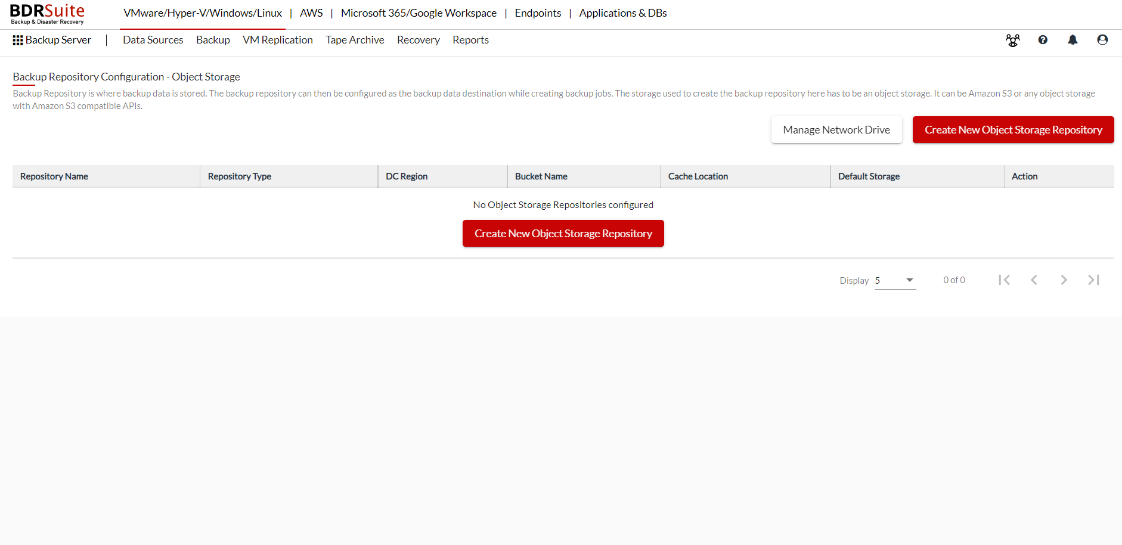Object Storage
BDRSuite supports storing of backup data on object based storage targets. This integration of BDRSuite with the cloud will enable users to choose their own cloud as their backup repository. Large unstructured data can be stored which is treated as separate objects and has it bundled with respective meta data and a unique identifier for quick access and retrieval. The backup data can be used for flexible restores at any point of downtime or disasters or any kind of data loss.

Limitations
- Offsite replication is not supported for backup jobs that stored the primary backup data in the Object Storage repository.
- The integrity check feature will not be supported for those backups stored in the Object Storage repository.
- The restore types such as Instant Boot VM, Disk Mount, and Microsoft Application item-level recoveries are not supported for image-level backup jobs (VMware/Hyper-V/Microsoft Windows) configured with an Object Storage repository.
- The tape archival is not supported if the primary backup data is stored in the Object Storage repository.
So, choosing the object storage repository as the primary storage target is entirely based on the RPO and RTO required. If you just want to store backup data for a longer period of time and do not require frequent or quicker recovery, then you can choose to store the backup data directly on Object Storage(AWS S3).
If your RPO and RTO are more stringent, it is advised to keep the primary backup data on block storage targets in your first site for instant recoveries and archive an additional copy of the backup data on object storage for long-term archival or disaster recovery purposes, either using the backup copy feature or Offsite DR.
|
